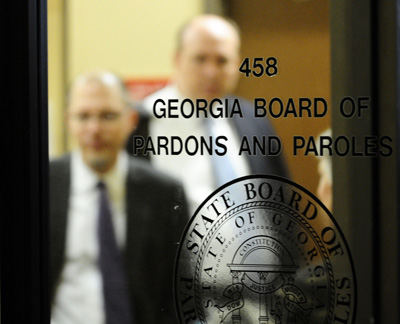
Unless something changes, Troy Davis is going to be executed on Wednesday for killing a police officer in Georgia. Seven of the nine non-police witnesses have recanted their original testimony identifying Davis as the killer.
“Police went to the scene, and they took quite a lot of witnesses — and all of the witnesses talked to each other — and they showed a single photo to various witnesses,” recalls Barry Scheck, the co-director of The Innocence Project. “You’re now in this difficult situation of asking, ‘Is this a reliable case?’ It’s an eyewitness case and now we have this terrible doubt surrounding it.”
What could have prevented it? Possibly, a witness identification procedure advocated by a group of scientists, including one at Augsburg College in Minneapolis, who officially released their study today showing that a traditional “lineup” method of identifying suspects in a crime is less reliable than a so-called “double blind” method.
Their study, first reported in the New York Times recently, found witnesses made fewer mistakes in identification if they’re shown members of a lineup one at a time rather than as a group.
Dr. Gary Wells of Iowa State University, the lead researcher, said the problem with the group lineups, known as simultaneous presentation, is that witnesses tend to compare people in the lineup to each other “and to decide who looks most like the perpetrator and then they identify that person,” he said.
“There’s always someone who looks more like the perpetrator in the lineup than others in the lineup, even when the perpetrator isn’t there,” he said.
“If they look at six pictures (at once), they pretty much assume one of them is a suspect,” according to Dr. Nancty Steblay of Augsburg College. “None of the six pictures looks exactly like memory, there’s this subtle shift away from, ‘is the culprit in the lineup?, do I see the person who robbed me?’, to ‘which one is closest to what I remember?’ And that is usually a sound procedure if the culprit is in the lineup. What we worry about is when the culprit isn’t in the lineup. Witnesses are very bad at recognizing when someone is not there.”
In DNA exoneration cases, 75% of those who were exonerated after being convicted by juries, are cases involving cases of mistaken identification.
In a “double blind” lineup, the researchers said, witnesses/victims are shown photos of suspects (or so-called “filler photos) individually, and not by someone who is an investigator in the case.
It’s a method used now in Hennepin and Ramsey counties. Dr. Steblay has been researching the method since the 1990s and worked with then Hennepin County district attorney Amy Klobuchar in 2004 to see if it provided more accurate identification and, hence, stronger cases.
“We didn’t run a comparative test like the one released today,” she said. “Amy Klobuchar had asked for volunteers just to see if it was possible for implementation to work. At the time there was a lot of worry about ‘the sky will fall if we start doing something different,’ or ‘it will be too expensive.” The question was can it be implemented, and they were implemented and … it all went well.”
“I became involved in this in the early 1990s, about the same time that these DNA exonerations began to pop and more and more we recognized that scientists have something to say about why these wrongful convictions occurred and how we can reduce the likelihood they happen in the future,” she said.
Some states — Texas for example — are now requiring law enforcement agencies to develop a plan for ensuring that the lineup procedures used are most likely to result in an accurate identification of a suspect. Minnesota is not one of those states.
“I wish it were because Ramsey County, Hennepin County, and the Bureau of Criminal Apprehension all use double-blind sequential procedures and there would be leaders in how to put together and initiate model legislation,” she said.
The third researcher on her team, Dr. Jennifer Dysart of John Jay College of Criminal Justice in New York, was in Atlanta today, hoping to detail her findings to the Georgia board that is deciding whether Troy Davis lives or dies.
“The Pardon and Parole Board limited the defense portion today to three hours and because of the number of questions that the Board had for other witnesses, I was not permitted to testify this morning,” she said.
